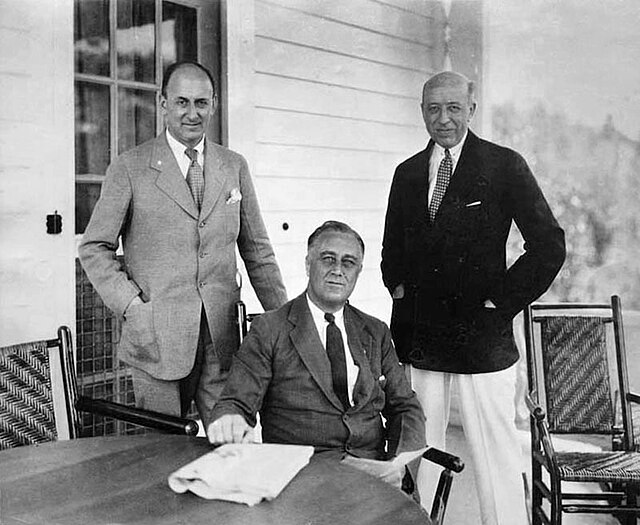The Morgenthau Plan was a proposal to weaken Germany following World War II by eliminating its arms industry and removing or destroying other key industries basic to military strength. This included the removal or destruction of all industrial plants and equipment in the Ruhr. It was first proposed by United States Secretary of the Treasury Henry Morgenthau Jr. in a 1944 memorandum entitled Suggested Post-Surrender Program for Germany.
Roosevelt and Morgenthau, who have been described as "two of a kind"
Morgenthau's 1945 book Germany is Our Problem
Henry Morgenthau Jr. was the United States Secretary of the Treasury during most of the administration of Franklin D. Roosevelt. He played a major role in designing and financing the New Deal. After 1937, while still in charge of the Treasury, he played the central role in financing United States participation in World War II. He also played an increasingly major role in shaping foreign policy, especially with respect to Lend-Lease, support for China, helping Jewish refugees, and proposing measures to deindustrialize and ethnically cleanse a massive portion of the German population.
Morgenthau in 1944
Young Morgenthau Jr. on April 20, 1915
Morgenthau, President-elect Franklin D. Roosevelt and DNC treasurer W. Forbes Morgan at Warm Springs (November 30, 1932)
Morgenthau addressing delegates on the opening day of the Bretton Woods Conference






